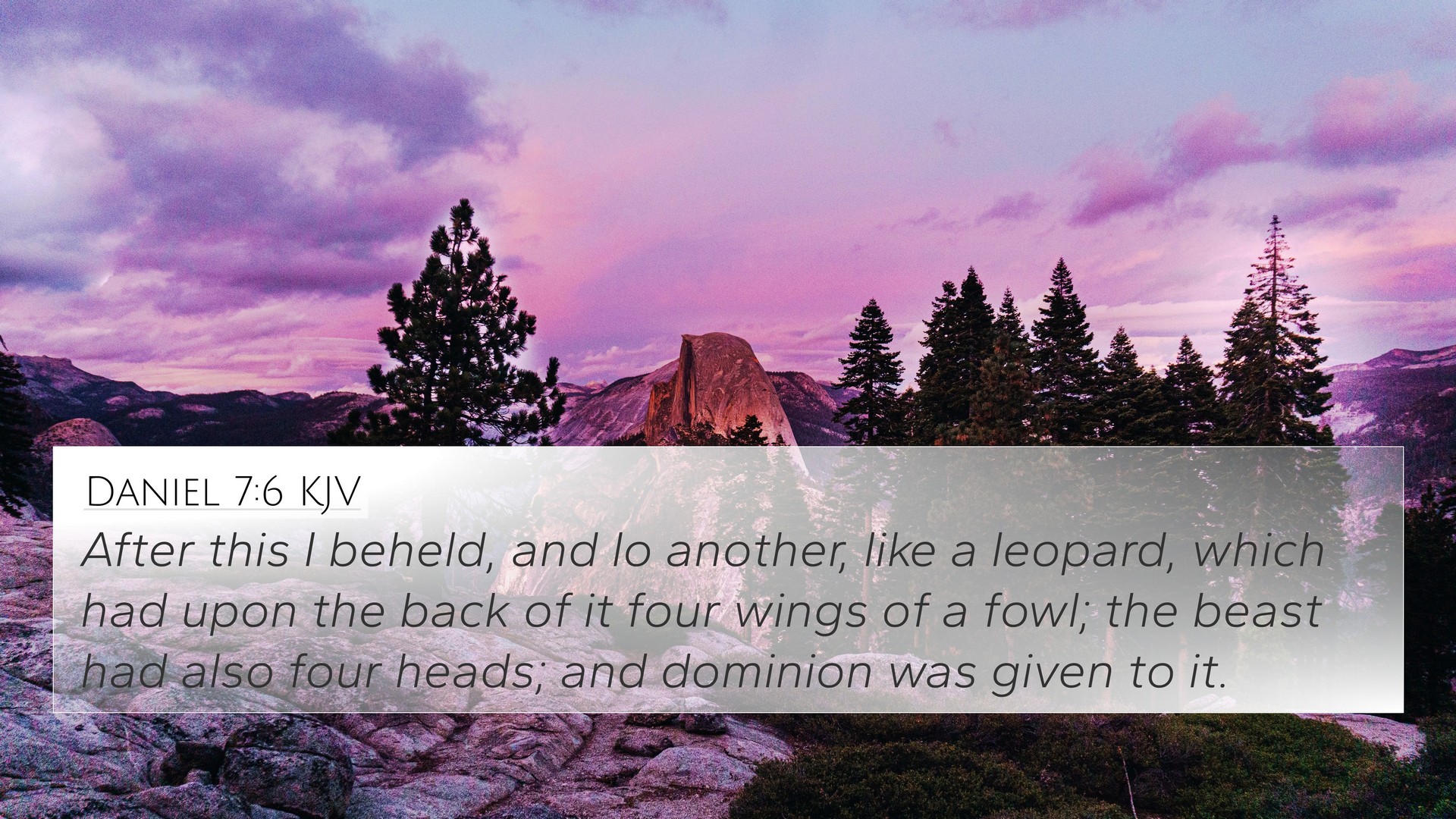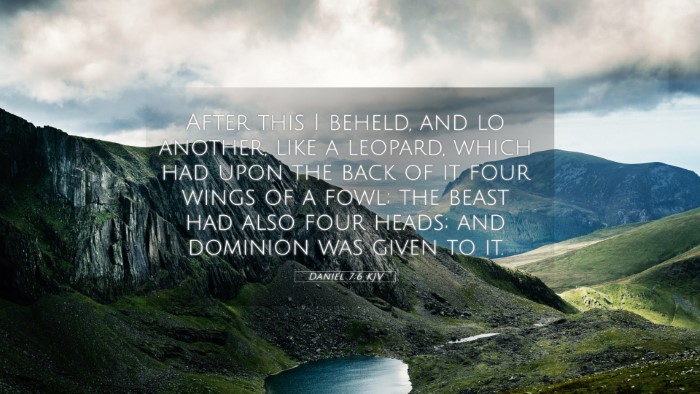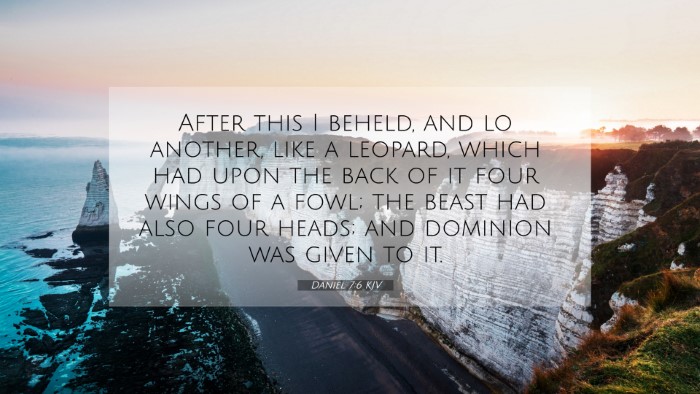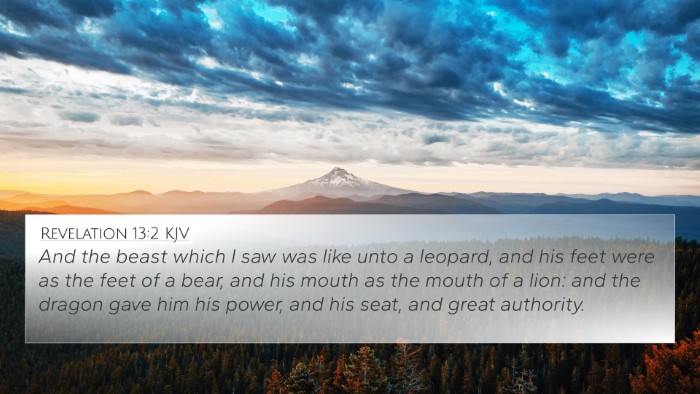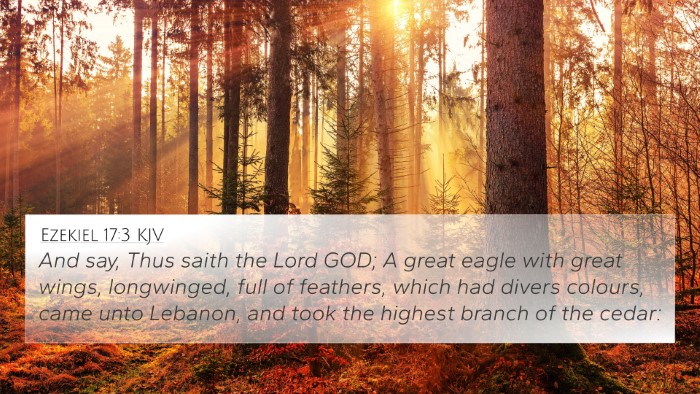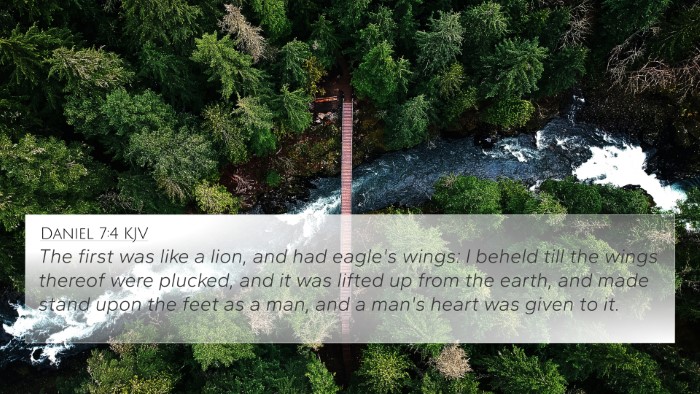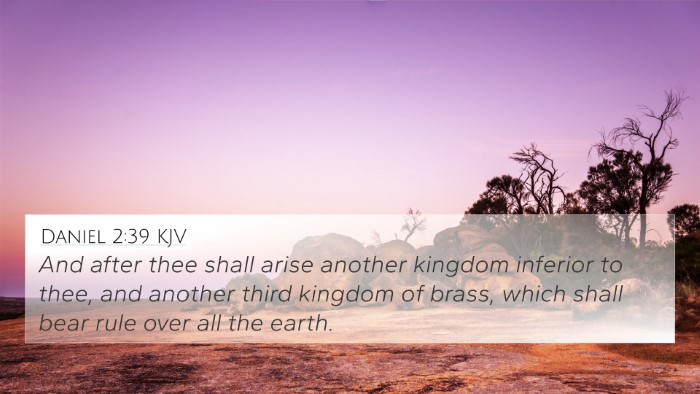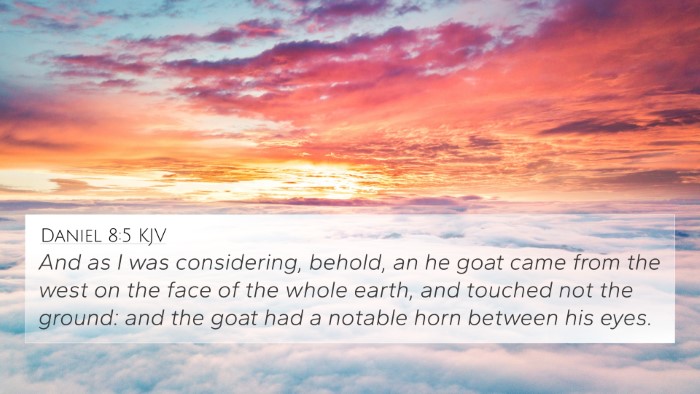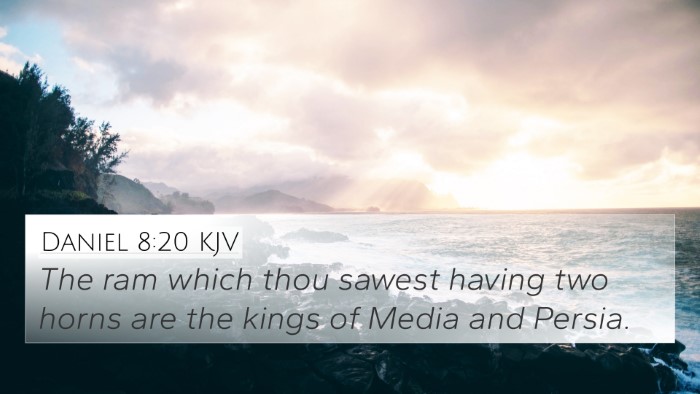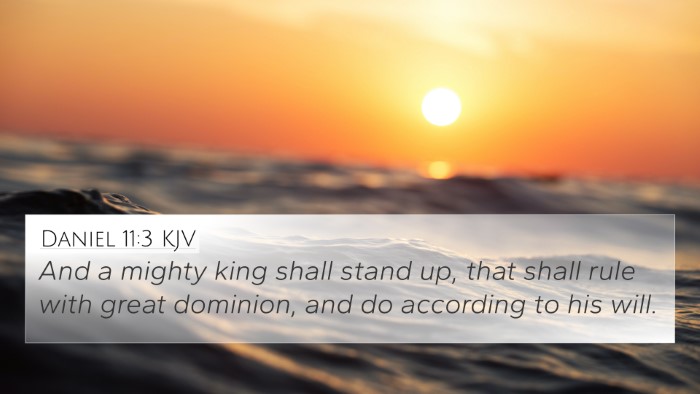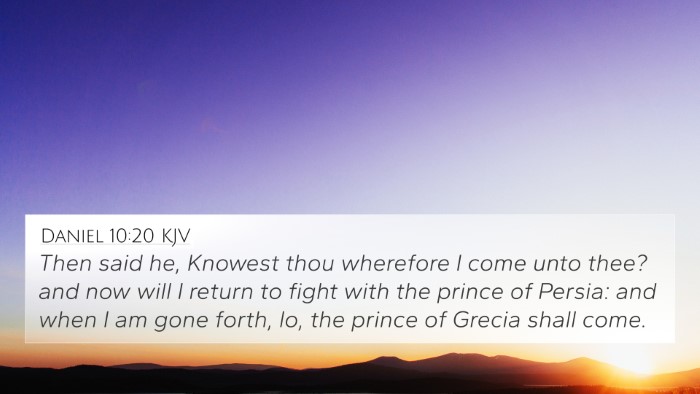Understanding Daniel 7:6
Bible Verse: Daniel 7:6: "After this I looked, and behold, another, like a leopard, which had upon the back of it four wings of a fowl; the beast had also four heads; and dominion was given to it."
Summary of Interpretations
This verse is part of Daniel's vision of four great beasts that represent kingdoms or empires in the world. Here are several insights drawn from public domain commentaries, including interpretations from Matthew Henry, Albert Barnes, and Adam Clarke.
1. The Nature of the Beast
Henry describes the leopard-like beast as swift and cunning, drawing parallels to the speed at which the Greek Empire, often represented by the leopard, took control. This beast signifies the rapid conquests of Alexander the Great’s empire, characterized by its agility and aggressive expansion.
2. Symbolism of Wings
Barnes elaborates on the significance of the four wings, suggesting that they symbolize increased speed, reflecting how quickly the empire would establish dominion across territories. The wings denote not just speed, but also the ability to overcome and conquer swiftly.
3. The Four Heads
Clarke points out that the four heads represent the divisions of the Greek Empire after the death of Alexander the Great, when his empire was split among his four generals. This detail showcases the eventual fragmentation of a once-unified empire, emphasizing the nature of political power and its transient nature.
4. The Theme of Dominion
All three commentators agree on the theme of dominion being given to this beast. This points to the sovereignty that God allows kingdoms to hold, serving as a reminder of divine authority over earthly powers.
5. Connections to Other Scriptures
This verse can be cross-referenced with several other biblical texts that deal with themes of empires and dominion. Here are some important connections:
- Revelation 13:2 - Describes a similar beast with characteristics echoing those of this leopard, emphasizing the continuity of prophetic visions.
- Daniel 2:39 - References the sequential rise of empires, where Babylon is followed by Medo-Persia and Greece.
- Habakkuk 1:8 - Discusses the speed and fierceness of the Chaldeans, which can be seen as a parallel to the beast's portrayal.
- Isaiah 46:10 - Affirms God’s control over world events and nations, aligning with the motif of divine sovereignty running through Daniel’s prophecies.
- Daniel 8:5 - Mentions a goat representing Greece that also shows swift movement across the land, reflecting the characteristics of the leopard-beast in 7:6.
- Revelation 17:10-11 - Discusses kings that arise and fall, again mirroring the transient dominion depicted in Daniel 7.
- Ezekiel 17:3-4 - Uses similar imagery of trees and wings that exemplify divine oversight and judgment over nations.
Practical Applications
Understanding this verse encourages readers to reflect on:
- The sovereignty of God over human history and political affairs.
- The inevitable rise and fall of earthly kingdoms as part of God's divine plan.
- Preparation for spiritual warfare, as indicated by the scrutiny of powerful forces depicted in prophetic literature.
Conclusion
In conclusion, Daniel 7:6 provides profound insights into the nature of empires and God’s sovereignty. By cross-referencing this verse with others, one gains a holistic view of biblical prophecy and its implications for understanding divine involvement in human history.
Related Study Tools and Resources
For deeper study, consider using:
- Bible concordances for identifying scripture themes.
- Cross-reference Bible study methods to explore thematic connections.
- Bible cross-reference guides to aid in sermon preparation.
Final Reflections
As you explore the connections between these biblical texts, remember that they serve not only as a means of understanding the scripture but also enhance one's faith through inter-Biblical dialogue, developing a rich theological understanding that can be applied to modern life.
